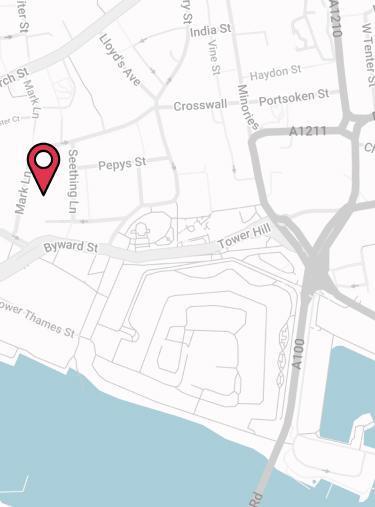Working norms have changed drastically since 2020, and along with the “new normal” has come an increased awareness of work-life balance and employee wellbeing.
To combat stress and burnout, many companies like Netflix, LinkedIn and Goldman Sachs have introduced unlimited paid annual leave, allowing employees to take as much time off as they like in any one year.
While it may not be feasible for many businesses to offer this perk to their team, you may be able to offer something else: Salary Sacrifice Holiday Trading.
But what is Holiday Trading? How does it work? And what impact might this have on your business? Our complete guide will walk you through all the information you need.
What Is Salary Sacrifice Holiday Trading?
Holiday Trading Schemes are also known as Holiday Purchase, Holiday Buy/Sell or Holiday Buyback Schemes. Despite the various names, they all offer the same thing. Essentially, these schemes allow employees to buy extra days of annual leave, or sell unwanted holiday back to your business.
Key Features
- Gives staff more control over how much holiday they have each year
- You can set a limit on how many days staff can buy or sell
- The cost of buying extra holiday is often spread over six or 12 months
- Employees can improve their work life balance by taking more time off
- Can help to combat absenteeism and sick days.
Holiday purchase schemes are a simple, flexible benefit that allows your employees to choose the holiday leave that best suits their personal needs.
How Does Salary Sacrifice Holiday Trading Work For Employers?
Any employer can offer a holiday purchase scheme, you don’t need to go through an official channel like with other Salary Sacrifice Schemes (such as Cycle To Work and Techscheme).
However, keeping track of everything manually can become time-consuming. Instead, you might use a digital platform where employees can make their own requests to buy and sell holiday days.
Making The Most Of Salary Sacrifice
When they’re up and running, annual leave purchase schemes work through a Salary Sacrifice arrangement between the employee and your business. Employees agree to exchange a portion of their gross monthly salary for a non-cash benefit. For example, a workplace pension, an electric vehicle, or in this case extra annual leave.
The amount of salary an employee can sacrifice depends on their contract, salary, and how many days they wish to buy. You can set limits on the number of days that can be purchased and should also check any existing Salary Sacrifice agreements they might have, as the combined total can’t take their earnings under the National Minimum Wage.
IMPORTANT NOTICE 🧐
When offering a holiday purchase scheme through salary sacrifice, you must ensure that an employees salary doesn’t fall below the National Minimum Wage.
Who Is Eligible For A Holiday Buy/Sell Scheme?
Before offering a Salary Sacrifice Holiday Trading scheme, employees should be aware that their requests to buy or sell annual leave aren’t guaranteed. All requests will need to be reviewed by management and will be approved or declined based on their eligibility.
When thinking about who is eligible for the benefit, you should consider:
- Employees who are still in their probationary period
- Any performance issues
- The National Minimum Wage (when buying holiday)
- The statutory minimum holiday entitlement (when selling holiday).
There are also regulatory restrictions to a holiday buy/sell scheme. It’s important that the salary sacrifice deductions don’t leave an employee’s salary below the National Minimum Wage. If their earned salary falls below this amount, they won’t be legally eligible to buy extra holiday.
Ensuring Statutory Minimum Holiday
Annual leave is a mandatory employee benefit in the UK. As a result of this, selling days mustn’t decrease an employee’s allowance below the statutory minimum. In the UK, most full-time staff have a legal entitlement to 28 days of paid leave. Some companies deduct the eight UK bank holidays (in a typical year) from this allowance. In these cases, staff who want to sell holiday must still have a minimum of 20 days of paid leave remaining.
When Can A Holiday Buy/Sell Scheme Be Set Up?
It’s best to set up a holiday buy/sell scheme in line with the start of a new annual leave year. Allowing staff to buy and sell holiday throughout the year can generate a lot of admin and cause a number of issues with resourcing or incorrect salary sacrifice payments.
You’ll need to think about when your company’s holiday year runs. Some common examples are:
- In January with the start of a new calendar year
- In April, in line with the fiscal year
- On each employee’s anniversary of their start date.
If your company’s holiday year runs from 1st January to 31st December, you’ll want the arrangements to be in place before the new year. In this scenario, you might give employees a two-week window in November to submit holiday buy/sell requests.
This leaves you enough time to review the requests and approve or deny them before the holiday year begins. It also helps to ensure your planning and resourcing is straightforward for the next year.
How Does Holiday Buy/Sell Work For Employees?
Buy and sell Holiday Schemes are gaining popularity among employees, as they offer greater control over work-life balance—something that is highly valued in today’s workforce. By allowing employees to tailor their holiday entitlement to suit their personal needs, these schemes provide the flexibility that many are seeking in their benefits package.
Opportunity To Buy More Holiday
From the employee’s perspective, opting to buy more holiday means they’re sacrificing a portion of their gross monthly salary in exchange for extra annual leave.
As an employer, you’re paying the employee a slightly lower gross salary in exchange for more paid time off.
The amount an employee sacrifices will depend on how many days they want to buy and their day rate if they’re a full-time employee. With this option, an agreed amount from the employee’s salary will be deducted each month in exchange for increasing their annual leave allowance.
Taking into account their department’s availability, the employee can then use these additional days in any way they choose, including:
- Special events such as weddings
- Honeymoons or the trip of a lifetime
- Spending more time with family
- Resting or relaxing at home.
The extra days may come in handy in the event of unforeseen circumstances that aren’t otherwise covered under sick pay or compassionate leave.
As already mentioned, you need to have business procedures in place to ensure that buying additional annual leave doesn’t decrease any employee’s salary below minimum wage.
Allows Employees To Sell Unwanted Holiday
Alternatively, employees can trade annual leave days they don’t wish to take in exchange for the equivalent amount in salary. With this option, an employee surrenders some of their holiday allowance but receives some extra salary. And as the employer, you pay the additional salary in exchange for the staff member taking less time off.
This option might suit an employee in any of the following circumstances:
- Saving for a large expense, e.g. a deposit on a house
- Prefers not to travel or splurge on a holiday
- Doesn’t feel they struggle with stress or burnout in their role
- Feels they’re unlikely to use all their annual leave.
Some employers allow staff to “cash in” unused annual leave at the end of the year, but this can cause unexpected business costs. It can also become costly for your business if more employees are selling annual leave than buying it.
As mentioned before, selling annual leave mustn’t decrease an employee’s holiday allowance below the statutory minimum. After selling any of their holiday, full-time employees must still have 20 days of annual leave remaining (not including the eight UK bank holidays in a typical year).
What Are The Benefits Of A Salary Sacrifice Holiday Trading Scheme?
Holiday purchase schemes come with many benefits that make them an attractive option to both employers and employees.
Benefits For Employers
Attracts Top Talent
Offering the option of buying and selling annual leave encourages employees to maintain a good work life balance. This is a great way of attracting top talent when recruiting.
Talented workers are drawn to companies with strong values and a positive culture. By including an annual leave purchase scheme in your employee benefits package, your company will stand out from your competitors on the market.
Helps Retain Top Talent
Not only can you attract new talent, but holiday purchase schemes can help retain the talented employees already on your team. Holiday buyback schemes can boost morale and make staff feel valued, as it helps them prioritise their personal health and wellbeing. When people feel more engaged at work, they tend to be happier, more productive, and less likely to search for a new role.
Reduces Absenteeism
Salary Sacrifice Holiday Trading schemes can also decrease the number of sickness absences. When staff are well-rested and healthy, they’re less likely to fall ill and take sick leave in the future.
Instead of saving up their annual leave and then rushing to take it at the end of year, staff who opt to buy more annual leave have more flexibility to deal with unforeseen circumstances. This could be a family emergency or a sudden bereavement. Having more holiday means that employees are able to take more time off to deal with any personal matters that might arise.
Can Save On National Insurance Contributions (NIC)
The employee’s Income Tax and National Insurance are based on their remaining salary after the holiday purchase deduction. As an employer, you can benefit from a tax saving here too, as you won’t make NI contributions on the amount sacrificed.
Benefits for Employees
Improved Wellbeing
With 91% of employees experiencing stress in the workplace, employers have a responsibility towards the wellbeing of their staff. Offering a holiday purchase scheme can help employees take time off regularly throughout the year. People who use this time to rest and relax, indulge their hobbies and interests, or spend quality time with loved ones, can benefit from a healthier work life balance and a positive impact on their wellbeing.
Greater Freedom And Flexibility
Offering an annual leave purchase scheme gives staff the flexibility to make this employee benefit work for them. If a team member wants to swap part of their salary for extra holiday, they’ll be able to put that time towards their personal priorities, whatever those may be.
At the same time, employees who have more annual leave than they feel they need are able to sell it back to their employer for the equivalent amount of salary.
Makes Them Feel Valued
People who fail to take all their annual leave often do so for a number of reasons. They may feel guilty for giving extra work to colleagues, or fear returning to a higher workload than before. However this can lead to exhaustion, burnout and low engagement. Employees need to feel valued and supported by their employer – not just during working hours, but outside of work, too.
Offering a holiday buy/sell scheme will enable your employees to prioritise their health, personal time and commitments outside of work. This can help develop a positive relationship between their work life and their home life, making the workplace happier and healthier.
Spread Costs Over 12 Months
When employees buy extra leave via a Salary Sacrifice Holiday Trading Scheme, they’re able to spread that cost over the year rather than have the lump sum deducted in one go. This makes this employee benefit easily affordable for most employees. Staff can also save on income tax and National Insurance, as their Salary Sacrifice reduces their gross pay each month.
How To Calculate The Costs Of Buying And Selling Employee Holiday
To better understand the impact of a holiday buy back scheme for employers, here are some real examples of how you’d calculate the potential costs and savings of this employee benefit.
Calculating The ‘Day Rate’
The cost of buying or selling holiday will vary from employee to employee, depending on their working hours and salary.
Firstly you need to work out how much an employee earns in a day, as this will give you the monetary value of buying or selling a day of annual leave. This is known as the “day rate”, and you can calculate it in two quick, simple sums.
Your first step is to work out how many days out of the year each employee works. To do this, multiply the number of working days per week by the number of working weeks per year.
Day Rate Calculation 🤓
5 days per week x 52 weeks per year = 260 days a year
This shows us that a full time employee earns their annual salary over 260 working days each year.
The second part allows us to calculate how much salary is earned per day. To do this, divide the employee’s annual salary by their number of working days per year. The table below shows some examples based on employees working 260 days a year.
You can see the day rate of full-time employees on a range of different salaries. For the purposes of a holiday buy back scheme, this number is what each day of annual leave costs to buy or sell.
Example One: Buying Holiday
Now that we have our employees’ day rate, calculating how much it would cost for them to buy additional annual leave is an easy calculation. All you need to do is multiply their day rate by the number of days they wish to buy.
Most employers allow staff to spread the cost of buying annual leave over a 12 month period. This brings the repayments down to a smaller monthly amount, which is sacrificed from the employee’s gross salary before any other deductions are made.
For you as an employer, this is the exact amount you’d save on payroll costs. In the table below, we’ve highlighted the annual and monthly costs for buying 5 days extra holiday.
Example Two: Selling Holiday
If the same employees wanted to sell 3 days of their holiday leave back to the company, the calculation works in the same way.
This time around however, your staff members would receive a boost to their salary by selling any unwanted holiday back to you, the employer.
In this scenario, your company would pay for the employees’ sold holiday through extra salary pay. The below table shows the annual and monthly salary increases these employees would receive, before tax.
Example Three: A Part-Time Employee
For a part-time employee, their day rate and holiday costs will be different, but your calculations will follow the same process. Here’s an example for an employee who works for 4 days per week on a term-time contract (39 weeks in a year), and has a gross annual salary of £15,000.
The first step to calculate the day rate is the same; we need to know the number of days this employee works in a year:
Part-Time Employee Day Rate Calculation 🤓
4 days per week x 39 weeks per year = 156 days a year
The next step follows the same process as before. We need to divide the employee’s annual salary by the number of days they work each year.
For this part-time employee, their day rate is £96.15. So this means that if they wanted to buy 4 extra days of holiday (4 x £96.15), it would cost them £384 each year, or £32 per month for 12 months.
If they wanted to sell 2 days of holiday (2 x £96.15), they would receive £192.30 on top of their gross salary. This would be an extra £16.03 in wages each month.
How Much Does It Cost To Set Up A Holiday Purchase Scheme?
Setting up a holiday buyback arrangement can vary in costs depending on the options you choose. There are also potential ongoing costs that you need to be aware of. Therefore before implementing a scheme it’s important to consider the following.
Administration Costs
One of the first things to consider in terms of your budget is how you want to manage the scheme. If you decide to implement and run the scheme in-house using a spreadsheet, you won’t pay any set-up costs at all.
You’ll need to make sure an existing employee or department has the availability to manage the scheme. However, depending on how many staff you have and when your holiday year runs, keeping your accounts up to date could require a lot of time and attention.
Swap spreadsheets for an employee benefits platform
As well as making your benefits management easy, a big advantage of using an employee benefits platform is that they often provide access to a range of other features, like employee discounts, wellbeing support, and staff recognition.
However, it’s worth bearing in mind that some platforms like this may need to be integrated into your payroll software. Also the cost of a platform will vary depending on your desired functionality and size of your business. Read more about employee benefits platforms.
Salary Costs
The main cost to factor in with a holiday buy/sell scheme is the potential salary costs.
Whether employees are buying or selling holiday, it will impact the salary you pay them. For employees buying holiday, you’ll pay them a slightly lower salary, and you’ll pay more in salary costs to employees who sell holiday.
Employees selling annual leave could become costly
This can become costly if more employees sell annual leave rather than buy it, so you need to work out how much holiday you can afford to buy back from each member of staff.
The main benefit of a holiday purchase scheme is that staff are able to take more time off and improve their work life balance at an affordable price, so you should end up saving money on salary costs.
One way to encourage this is to allow staff to buy more holiday than they can sell. For example, employees could buy up to an additional 5 days of annual leave and sell a maximum of 3 days.
If more employees buy additional annual leave, you could save thousands of pounds on salary costs per year. These savings could then cover the cost of a digital platform, or be reinvested into other employee benefits.
How Are Holiday Trading Schemes Taxed?
Holiday purchase schemes operate through salary sacrifice, so when employees buy additional holiday, they’ll pay less NI and Income Tax. Our below calculations are correct as of October 2024. We recommend you keep an eye on current tax thresholds to keep your own figures up to date.
Tax Example: Buying Additional Holiday
To see how this impacts an employee’s wages, let’s return to our earlier example of a full-time employee who earns £30,000 per year and wishes to buy five days of extra annual leave.
In this scenario, the employee’s salary sacrifice is £48.08 per month. Below, we’ll illustrate how much tax they’d normally pay, and compare this to their salary sacrifice.
Tax Example: Selling Unwanted Holiday
For employees who sell any holiday, their wages are taxed in the normal way. We’ll use the above figures to imagine the employee is selling 5 days of annual leave, rather than buying them.
Employer Contributions And Tax
In the event of an employee buying more annual leave and sacrificing a portion of their salary to pay for it, you’ll pay less in NI contributions. The amount of NI you pay will vary from employee to employee, depending on their salary and tax bracket. Bear in mind that the NIC rate for employers can change.
How To Set Up A Salary Sacrifice Holiday Trading Scheme In The UK
Before setting up a holiday buy/sell scheme, it’s important to consider several factors.
Make A Plan
Taking stock of everything covered so far, the first thing you need to do is decide what kind of holiday purchase arrangement will work for you and your staff. With that in mind, it’s helpful to think about why you want to offer a holiday buy/sell scheme and what your employees will want to get out of it.
Costing
When offering any employee benefit, you need to have a clear idea of any potential expenses. Make sure you think about the following points:
- What’s your budget for starting a holiday purchase scheme?
- Do you need administration or payroll support from an employee benefits platform?
- If all employees sold the maximum amount of holiday available, would this be affordable?
Planning
Alongside anticipating any business costs, you’ll need to decide on a number of factors that could impact your business plans or project deadlines. You’ll benefit from considering the following:
- What is the maximum amount of days staff will be permitted to buy or sell?
- If all employees bought the maximum amount of annual leave on offer, would you still have the resources needed to operate your business?
- Who is eligible for the scheme?
- Will all departments be able to buy or sell the same amount of holiday?
- When will you allow people to buy or sell annual leave?
You may allow employees with a greater annual leave entitlement (i.e., those who are in management and/or have long service with the company) to sell more leave days than others.
Remember, you can deny specific leave requests if too many people want the same days off, as you won’t want to leave any of your teams short-staffed.
Unused Holiday
You’ll also need to agree what will happen to additional holiday that has been bought but not used within the holiday year.
- Will your company buy back any unused annual leave at the end of the year?
- Can holiday be carried over to the following year?
- Will employees lose unclaimed holiday without any reimbursement?
Employees will need to be aware of these potential consequences before they take the option to buy or sell holiday.
Create A Communication Strategy
Now that you have a plan for how your holiday buy/sell scheme is going to work, you can start to implement your plan with a clear communication strategy.
There might be some specific teams who need to know about the benefit before you launch it to your staff, for example, HR, Accounts and Management.
Once they’ve been briefed, you can think about how you’ll launch the scheme to your wider staff. You can use any number of communication channels that suit you:
- Staff meetings
- Online webinars
- Email communication
- Company intranet
- One-on-one meetings.
Remember, you’ll need to send clear communications before, during and after the holiday buy/sell window closes. Employees will need to understand the process for buying or selling holiday and how this will impact their salary.
It will also help you to repeat some of these communications throughout the year and promote the scheme when recruiting. This helps to ensure that more staff are aware of the scheme and make use of it.
Measure The Scheme’s Success
Once the holiday buy/sell scheme has been up and running for a while, you’ll want to know how it’s being used by staff and how it impacts your business.
To track how successful the scheme is, the main area you’ll want to focus on is your payroll. Compare the projected cost of your payroll with your actual payroll costs.
If more people are buying annual leave, your salary costs should be lower than predicted. If more people are selling annual leave, your salary costs may be higher than expected.
You may find that staff aren’t using the scheme to buy or sell holiday at all, you’ll want to dig a little deeper and understand why. You might decide to take the following actions:
- Relaunch the scheme to garner more interest and awareness, then reassess engagement again at a later date
- Ask for general feedback from staff
- Conduct surveys to understand why people may not be using this benefit.
If your staff aren’t using the scheme, or if engagement and payroll savings are on the low side, it might not be worth offering this employee benefit. In this case, you’ll have the chance to review your employee benefits package and find something more suitable for your team.
What if an employee’s hours and/or salary change throughout the year?
The Salary Sacrifice Holiday Trading agreement would usually be honoured for the remainder of the holiday year, even if an employee moves into a role with a different salary. However, in certain circumstances, you may need to recalculate the annual leave deductions.
For example, an employee might decrease their hours or move to a lower paid position to help them manage an ongoing health issue. In this scenario, the cost of the agreed Salary Sacrifice might put the employee’s earnings below the National Minimum Wage. You’d therefore need to recalculate the cost of the holiday purchase arrangement to ensure that this doesn’t happen.
What happens if an employee leaves the company?
It depends on the terms of the Salary Sacrifice arrangement. If additional annual leave has been bought but not used, you might buy back the employee’s holiday. However, if you don’t offer reimbursement for unused holiday, employees may need to take any remaining holiday within their notice period.
Can staff carry over unused holiday to the following year?
Working Time Regulations only allow employees to carry over some of their statutory minimum allowance of annual leave. Up to four weeks (20 days) can be carried over and used over the following two years. However, this doesn’t apply to additional annual leave that has been bought via Salary Sacrifice. It’s down to the employer whether they allow staff to carry over additional annual leave an employee has bought.
Are annual leave requests made in the same way as regular holiday requests outside of a scheme?
Yes, if you’ve decided on a platform you’d like to use, any holiday that’s bought or sold will be updated onto your company’s HR system. Or, if you’re running the scheme in-house, you’ll only need to keep track of how much annual leave each member of staff has during the year. Employees will then book holiday in the normal way.
Are staff taxed on the amount they receive after selling holiday?
Yes, any holiday that is sold will be paid as gross monthly salary, and will be subject to tax deductions in the normal way. Employees should be aware of nearing a new tax threshold, in case the amount of holiday they’re selling pushes them into a higher tax bracket. This could make them financially worse off due to the increase in income tax and NI.
Will the salary sacrifice deductions impact an employee’s pension?
It depends on the pension scheme. If staff are enrolled onto the NHS Pension Scheme, their pension benefits and contributions will be impacted by a salary sacrifice arrangement. Otherwise, employer and employee pension contributions will be made as normal with no impact from salary adjustments from buying or selling holiday.
Get Specialist Help Setting Up A Salary Sacrifice Holiday Purchase Scheme
As you can see, Salary Sacrifice Holiday Trading Schemes come with a range of benefits for your employees and your company as a whole. However, there’s still a lot to consider when setting up a scheme.
The size of your company, your industry, and the other employee benefits you want to offer will all factor into forming a competitive employee benefits package. And not everyone has the time or resources required to do the research or the admin needed.
Our specialists can talk you through all your options and research the whole UK market to ensure your benefits suit your specific needs. You can call us on 02074425880 or email our team at help@drewberry.co.uk.
Why Speak to Us?
Employee benefits can be a headache. But our specialists do this day-in, day-out, offering first class service when you need it most. Here’s why you should talk to us:
- Award-winning independent employee benefits consultants, working with leading UK insurers and benefit providers
- Assigned specialist on hand to help – every step of the way
- 4077 and growing independent client reviews rating us at 4.92 / 5
- Authorised and regulated by the Financial Conduct Authority. Find us on the financial services register
- Claims support when you need it most.











